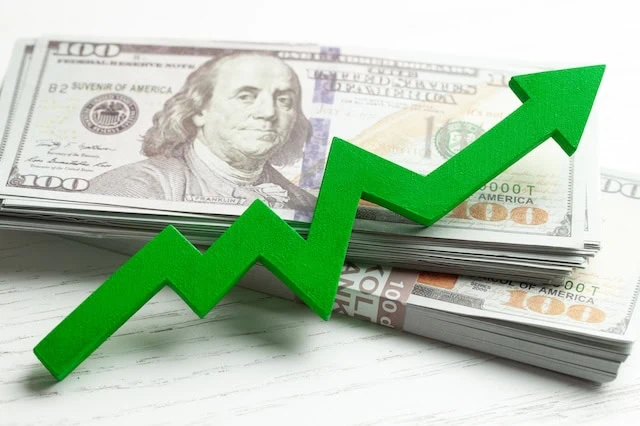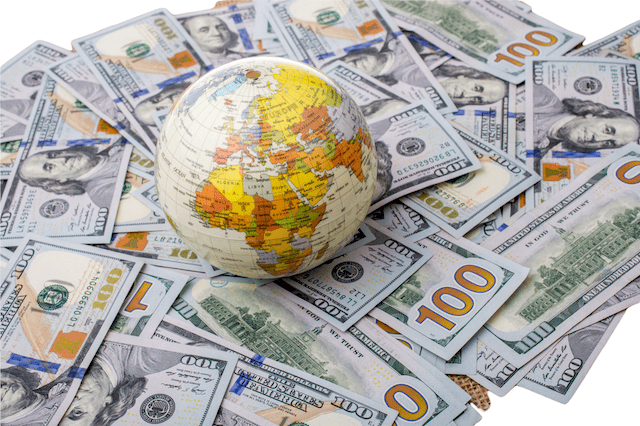Yield is the “sizzle” in most dividend discussions. It’s no mystery why: If you’re interested in stocks for their ability to generate income, the most natural number to gravitate around is how much income they’ll generate for you today.
But if you’re investing for the long term, you should pay at least some attention to how much those dividends have changed over time—and thus how much income they might generate for you in the future.
That’s the basic premise behind dividend-growth investing, which you can do by purchasing individual stocks … or via dividend-growth exchange-traded funds (ETFs), which have the added bonus of providing instant diversification across dozens or even hundreds of these stocks with little effort needed on your part.
But like any corner of the market, dividend-growth stocks aren’t a monolith—there are numerous ways to invest with an eye on higher future income. So read on with me today as I introduce you to three dividend-growth ETFs with three different takes on this equity-income strategy.
Disclaimer: This article does not constitute individualized investment advice. These securities appear for your consideration and not as personalized investment recommendations. Act at your own discretion.
Why Dividend Growth?

Investors buy stocks generally because of their ability to appreciate over time. Dividend stocks add another way to earn returns: In addition to price appreciation, you also receive cash income.
The higher the yield from a regularly paid dividend, the more in returns you might expect to receive as a baseline. Thus, when many investors research dividend stocks, one of the first metrics they look at is the headline dividend yield.
However, some investors specifically focus on companies that don’t just pay dividends, but have a track record of growing those dividends. And there are two very good reasons to do that:
1. Dividend Growth Can Be a Sign of Quality

When a company initiates a regular dividend, it’s effectively promising to give back a portion of its profits back to shareholders on a consistent basis. Yes, dividends can be reduced and even suspended, so it’s not an ironclad promise … but given the repercussions, it’s a promise that management would prefer to keep.
That, in and of itself, is a signal of quality—that the company believes it can generate a certain baseline of profits.
Dividend growth, then, is an even stronger signal of quality. Companies typically won’t raise their regular dividends substantially if they think increased profitability will be cyclical and short-lived—but they will if they’re increasingly optimistic about a baseline of profits that they can count on generating year after year after year.
There’s also something to be said about longevity of dividend growth—Dividend Aristocrats and even Dividend Kings that grow their payouts without interruption for decades are demonstrating their business’s ability to keep shareholders paid through thick and thin.
2. Dividend Growth Improves Your Yield on Cost

When you look up a stock’s information, the dividend yield listed (which we often call the “headline yield”) is based on the most recent dividend and the current stock price.
That yield is often actually different than the one current shareholders enjoy. That yield is called “yield on cost,” which is the payout based on what you paid, at the moment you invested.
Let’s say you buy a stock at $100, and it pays $1 per share. It yields 1.0% when you buy it ($1 / $100 x 100 = 1.0%).
In a year, that stock has doubled to $200 per share, and it also doubled its dividend to $2 per share. If you look up its information, its dividend is still 1.0% ($2 / $200 x 100 = 1.0%).
That’s not your yield on cost, however. You’re still receiving that higher dividend of $2 per share. But your cost basis is still the original $100 you bought the share at. So now, your yield on cost has doubled, to 2.0% ($2 / $100 * 100 = 2.0%)!
Importantly, dividend-growth stocks can eventually pay better yields on cost than stocks with high current yields but low to no dividend growth. Also, dividend growth helps preserve your dividend’s worth against inflation. Let’s say inflation averages 3% over the next 10 years—the dividends you receive would need to grow by 3% annually just to keep pace with inflation. If your stocks grow their dividends faster than that, you’re coming out ahead. If your stocks grow their dividends slower than that, or not at all, your dividends are actually worth less and less over time.
3 Dividend-Growth ETFs to Buy

You can easily add dividend growth to your portfolio by purchasing individual stocks such as so-called Dividend Aristocrats and Dividend Kings that boast decades of uninterrupted dividend improvement.
But if you’d prefer to diversify your money across many dividend growers all at once, a basic dividend-growth fund can do just that.
The following are three of the best dividend-growth ETFs you can find. While there are many more such funds out there, these three have been selected for their varying approaches to this dividend strategy.
Related: 15 Alarming Gen X Retirement Statistics
Best Dividend-Growth ETF #1: Vanguard Dividend Appreciation ETF

- Assets under management: $95.7 billion*
- Dividend yield: 1.7%
- Expense ratio: 0.05%, or 50¢ per year on every $1,000 invested
Maybe there’s something to be said about the fact that the largest dividend ETF by assets is dedicated not to headline dividend yield, but dividend growth.
The Vanguard Dividend Appreciation ETF (VIG) is a straightforward dividend-growth index fund that’s benchmarked to the S&P U.S. Dividend Growers Index, which holds stocks that have consistently improved their payouts every year for at least 10 consecutive years. As a further nod to the idea that high dividend yield isn’t always high-quality dividend yield, VIG actually excludes the highest-yielding 25% of stocks that otherwise would be eligible for inclusion. The index also excludes real estate investment trusts (REITs), as well as any companies that are working through bankruptcy proceedings.
The fund is market cap-weighted, too, which means the bigger the stock, the more influence on the portfolio. The top 10 holdings, for instance, account for nearly a third of VIG’s assets.
This is a massive portfolio of about 335 dividend growers, predominantly large-cap and U.S.-based in nature. You’ll get stocks you’d be likelier to associate with dividend income, including Johnson & Johnson (JNJ) and JPMorgan Chase (JPM). But you’ll also get some “growthier” companies, such as semiconductor firm Broadcom (AVGO) and software giant Microsoft (MSFT). And while many yield-oriented ETFs are heavy in utility, consumer staples, and energy stocks, VIG is currently most concentrated in companies from the information technology, financial, and health care sectors.
In short, you’re getting a diversified portfolio of stable, dividend-growing stocks. The only noteworthy downside is a modest yield that’s currently about a half a percentage point more than the S&P 500.
* Vanguard fund assets are spread across multiple share classes, including mutual funds and ETFs alike. Assets listed for each fund in this story are for the ETF share class only.
Want to learn more about VIG? Check out the Vanguard provider site.
Related: 3 Best Consumer Staples ETFs You Can Buy
Best Dividend-Growth ETF #2: ProShares S&P 500 Aristocrats ETF
- Assets under management: $11.3 billion
- Dividend yield: 2.0%
- Expense ratio: 0.35%, or $3.50 per year on every $1,000 invested
The ProShares S&P 500 Aristocrats ETF (NOBL) is laser-focused on dividend growth, but it sets a much higher bar than the aforementioned VIG.
This dividend-growth ETF invests in the S&P 500 Dividend Aristocrats: an elite group of stocks that have upped the ante on their payouts for at least 25 consecutive years. That means these companies were improving their payouts during the dot-com bust, the Global Financial Crisis, and COVID. Not bad!
“From an evergreen standpoint, companies that consistently grow their dividends are demonstrating quality,” says Simeon Hyman, global investment strategist at ProShares. “You can’t manufacture a dividend out of thin air. These companies have to be generating consistent earnings, consistent cash flow, have appropriate levels of leverage … and that comes through in spades. If you look at the Aristocrats, you’ll see things like better return on assets (RoA) compared to the S&P 500, and a whole host of other measures.”
In other words … the kinds of companies that have already proven many times that they can survive economic and market tumult.
Because NOBL is limited to just the Dividend Aristocrats, the portfolio is a tight group of fewer than 70 holdings. And despite their pedigree, this ETF equally weights all of its components, meaning no single stock has an outsized pull on performance.
Finally, the yield, while still modest, is higher than VIG’s at 2%.
Want to learn more about NOBL? Check out the ProShares provider site.
Related: 3 Best Utility ETFs You Can Buy
Best Dividend-Growth ETF #3: ProShares MSCI EAFE Dividend Growers ETF

- Assets under management: $70.7 million
- Dividend yield: 2.2%
- Expense ratio: 0.50%, or $5.00 per year on every $1,000 invested
American companies obviously aren’t the only companies that pay dividends, nor are they the only companies that grow their payouts from one year to the next.
If you want to add geographic diversification to your dividend-growth efforts, then, you can look toward funds like the ProShares MSCI EAFE Dividend Growers ETF (EFAD).
EFAD is focused on companies found within the MSCI EAFE Index, which refers to developed-market countries found in Europe, Asia, and the Far East. The fund’s tracking index invests in large- and mid-cap companies within the MSCI EAFE that have consistently increased their dividends annually for at least 10 years.
Country weightings aren’t too dissimilar from what you’d find in a traditional developed-market ETF: a high level of concentration in Japanese companies (30%), followed by the U.K. (16%) and Switzerland (12%). Much like NOBL, EFAD is chock full of dividend-growing blue chips, including Hong Kong insurer AIA Group (AAGIY), Italian energy firm Enel (ENLAY), and British aerospace company BAE Systems (BAESY). And it too is equally weighted, limiting single-stock risk.
International developed-market stock funds often carry higher dividend yields than their American counterparts, and that’s the case with EFAD … but at a little more than 2%, the yield isn’t substantially more than you get from U.S. dividend-growth funds.
Want to learn more about EFAD? Check out the ProShares provider site.








